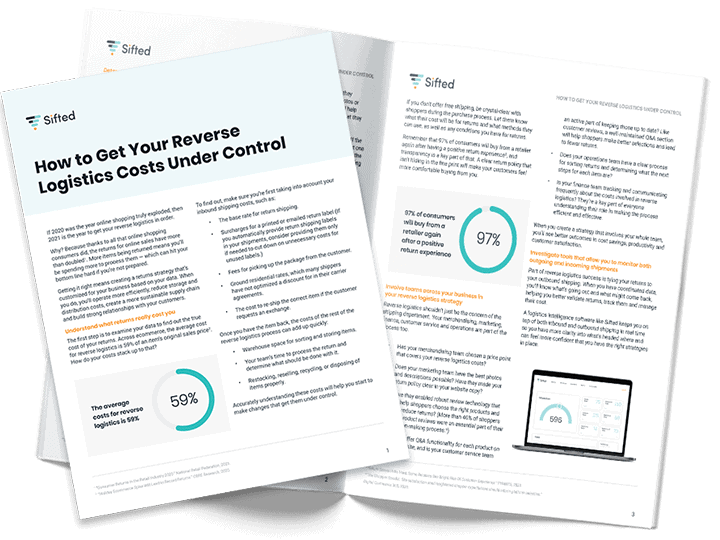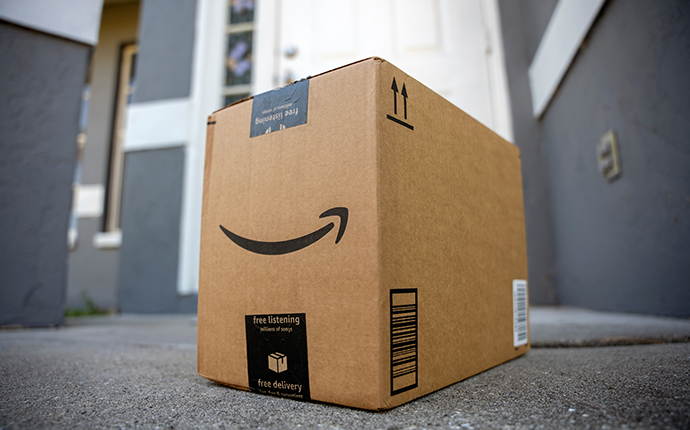Who’s at Fault for Damaged Packages?
Whether you sell products online or in a brick-and-mortar store, there’s something that all eCommerce sellers have to deal with – customer returns and refunds. Denying a return request is not an option, especially if you care about your business’s reputation and customer satisfaction.
It can be a frustrating experience for customers to receive damaged packages. In most cases, the shipping carriers are responsible for the damaged contents. Still, the customer often considers you, the seller, responsible for the bad experience. The last thing you should do is test their patience with a complicated refund process. As a seller, you should work with your shipping partners to process the refunds more smoothly.
Fast refunds and returns reduce the customer’s pain, and make them into a returning customer. 92% of customers are more likely to buy from you again if you offer a smooth return experience.
In this article, we’ll take a closer look at how shippers can handle products that are damaged in transit and discuss some of the best ways to create a seamless return and refund experience for your customers.
What Sellers Can Do About Damaged Packages
If shippers are not careful, regular refund requests can destroy their bottom line. Let’s look at some ways you can turn a customer refund into a customer for life.
Give the Buyer a Full Refund (without Return of the Item)
Full refund without return refers to when you, the seller, return the full amount of what the customer paid for the defective or damaged product, and the customer also keeps the item.
Amazon’s Returnless refund policy (or return without refund) allows merchants to issue a full refund to the customer for seller errors or defective products without returning them. The “returnless refunds” feature helps sellers to save on expensive return shipping costs.
Similarly, some retailers also offer a full refund without return for low-value or bulky items that are difficult to resell.
According to a 2021 survey, 84% of customers said that they would turn their back on a company following a bad returns experience. This means that no-return refunds make customers happy and improve brand loyalty.
Refund-without-return policy can make it more tempting for customers to make the purchase. However, it can also result in brands losing money when customers submit a fraudulent claim form. In 2020, fraudulent returns cost sellers $25.3 billion in the US.
Customers exploiting the system can damage your eCommerce business’ profitability. So before you implement a full refund without return policy, it is vital to examine your finances to ensure your store can withstand the costs of scams.

How to Get Your Reverse Logistics Under Control
Give the Buyer a Partial Refund (without Return of the Item)
A partial refund without return means you, the seller, refund some of the amount the customer paid, and the customer keeps the item.
Unlike a full refund, you can work with your customer to decide the refund amount depending on the item’s condition and the responsibility for the shipping costs. For example, a partial refund may be greater when the package is delivered with physical damage but is safe to use compared to a cosmetically damaged item with surface scratches.
Most eCommerce shippers go the extra mile to provide convenience to their consumers. But there is a fine line between keeping customers happy and hurting your profit margins.
Partial refunds without return help sellers resolve disputes while covering some of the cost of the item. It is also a useful way to discourage bad actors from misusing the system while offering a great experience to genuine customers.
Send a Replacement Item
When you sell a product that doesn’t meet the customer’s requirements, you can exchange it with an identical item if it has a major issue. This way, the customer gets the right product without any refund.
60% of Shopify returns happen when customers don’t get the right size or style of the product. This means you can resolve the issue simply by offering a variant exchange to the customer.
Alternatively, if the damage to the product is minor (e.g., a toy or bookshelf, etc.) and can be fixed, it may be reasonable to cover the repair costs.
A seamless replacement experience can help you retain customers, as 48% of online customers say that they replaced a product and purchased the replacement from the same retailer compared to 14% that replaced the times from a different retailer.
As a seller, you must make the claims process simple for your customers. Keep them updated about when the replacement is dispatched and when the package is expected to arrive. This results in fewer customer service queries and a better customer experience.
Ask the Buyer to Return the Item to Get a Refund
Returns processing can be a hassle for online sellers, but a clear return policy can protect your business from losing money when a return request comes in. Inform your customer about how to return the product and receive a refund.
Depending on your returns policy, you can immediately pay the refund amount for cash and credit card payments. In contrast, checks need more time to process.
Amazon recommends waiting until you’ve received the item back before issuing a refund.
Amazon customers have a 30-day timeframe to request a return. If you choose to process returns outside this window or the returned package arrives damaged, used, defective, or materially different, you can charge a restocking fee.
For example, you can charge 20% of the total price on items returned in their original condition once the 30-day return period has passed. Similarly, you only can deduct up to 50% of the total cost in restocking fees on CDs, DVDs, VHS tapes, cassette tapes, and vinyl records.
Nothing at All
To prevent abuse, you should set down a clear return and refund policy laying out terms and conditions under which you won’t entertain returns and refunds. This can help you shield your business from dishonest customers and avoid monetary losses.
Look out for potentially fraudulent refund claims. You don’t have to offer refunds or other restitution for the following scenarios:
- The customer changed their mind.
- The customer damaged the product when repairing it. You can still cover the cost of repair or offer a partial refund or replacement, depending on your returns policy.
- Most retailers don’t offer refunds on items such as perishable goods, used CDs, DVDs, and computer software.
Tips for Shippers
Below, we will review the most helpful suggestions to keep in mind when your transactions don’t go as expected.
- Try to retain the customer: A seamless returns process that prioritizes exchanges is a great way to keep your customers happy. Experienced sellers know that flexible consumer returns policies improve customer retention and boost brand loyalty.
- Consider the cost of returns: Returns can be costly for sellers. The cost of the merchandise and shipping can be detrimental for small sellers. If you operate with thin profit margins, you’ll need to review your finances to see if your online store can offer features like returnless refunds.
Similarly, you should create your return policy based on what you sell. For example, the return cost of a dense wood furniture will differ from returning a book. - Process claims through your carrier: Shipping carriers like USPS (United States Postal Service) let you file indemnity claims for insured packages. USPS may ask your customers to take the damaged package and original packaging to their local post office for inspection. They may also be asked to provide proof of value (e.g., sales receipt, paid invoice, printouts of the online transaction identifying the buyer and merchant, description of the item, the amount paid, etc.) and proof of damage (e.g., photos clearly showing the extent of damage, etc.)
Similarly, FedEx may ask your customers to fill out a claim form and provide supporting documentation as well as the original box, the contents, and packaging materials for inspection.
In addition, shipping companies have set deadlines for submitting claims. USPS damage claims must be filed within 60 days after the mailing date, and FedEx damaged claims must be reported within 60 days of delivery for domestic packages. - Invest in good packing materials: Improving the quality of packing materials can protect your products from damage while in transit. For example, get proper packaging materials like bubbler mailers for cushioning and protecting fragile items.
Take a Hard Look at Your Shipping with Sifted
Most shippers detest having to issue a customer refund. However, handling the customer’s refund request positively can increase your brand reputation and win loyal customers.
Sifted Parcel Audit helps shippers to recover lost revenue through refunds. Our software helps you to monitor parcel carrier invoices and explore package level details to uncover service and invoice errors.
Recover lost shipping costs and refunds by getting a demo with Sifted today!











